The Land of Sauerkraut (and Mozart)
Because I lose interest easily, I never have the same column for longer than one school year. And because I have been writing for the Alte for many years now, when this September rolled around, I struggled to find a new column. I had done sci-fi and femme fatales and bones and Europe. I would do Richard Armitage, but really, no one wants to read about that... Thus, I buckled down and started brainstorming. What do I like? A lot of things, but on that day, I happened to be dieting, so I only had one thing on my mind. Food. Thus, here we are.
Welcome to EuroEats!, where I will review in great, flowery detail some of my favorite foods from some of my favorite cities. First up is Salzburg.
Austrian cuisine in general is heavily influenced by German food, and until about 200 years ago, Salzburg was considered a part of Germany (Bavaria). Additionally, a lot of Central European food overlaps, due to shared histories and similar ingredients. But each country, including Austria, puts its own twist on mutual dishes.
Liptauer
 This delicious cheese spread is usually served as an appetizer or as a snack. But it is no simple cheese spread. Finely chopped onions and tons of spices are mixed in, as is butter or sour cream, depending on preference. The type of cheese varies, as well, but the most common ones are sheep's milk (like feta), goat's milk, quark, and cottage cheeses. Served with brown bread (which is the norm in Central/Eastern Europe), liptauer can also be found in Slovakia (as šmirkás), Hungary (as körözött), Croatia, and Serbia.
This delicious cheese spread is usually served as an appetizer or as a snack. But it is no simple cheese spread. Finely chopped onions and tons of spices are mixed in, as is butter or sour cream, depending on preference. The type of cheese varies, as well, but the most common ones are sheep's milk (like feta), goat's milk, quark, and cottage cheeses. Served with brown bread (which is the norm in Central/Eastern Europe), liptauer can also be found in Slovakia (as šmirkás), Hungary (as körözött), Croatia, and Serbia.
Sauerkraut
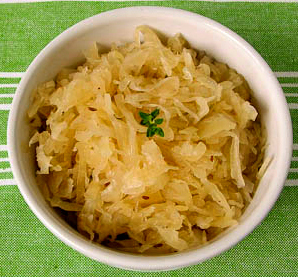 I'm going to say this now. I love sauerkraut. It's one of my all-time favorite foods. Just about every Central and Eastern European country has it, so I've eaten it nearly everywhere I've traveled. And it has tasted different each time.
I'm going to say this now. I love sauerkraut. It's one of my all-time favorite foods. Just about every Central and Eastern European country has it, so I've eaten it nearly everywhere I've traveled. And it has tasted different each time.
Honestly, sauerkraut is simple. It's finely-sliced cabbage that has been fermented in a pickling process, until it is sour but still crunchy. The name itself means "sour cabbage," so that's a good tip to how it tastes. Different nationalities consume it in different ways. The Austrians generally braise it with a combination of bacon fat, liquid (water, wine, stock), and caraway seeds. The sauerkraut I had in Salzburg accompanied pork and würstl and was more sour than the others I've eaten.
Saftgulasch
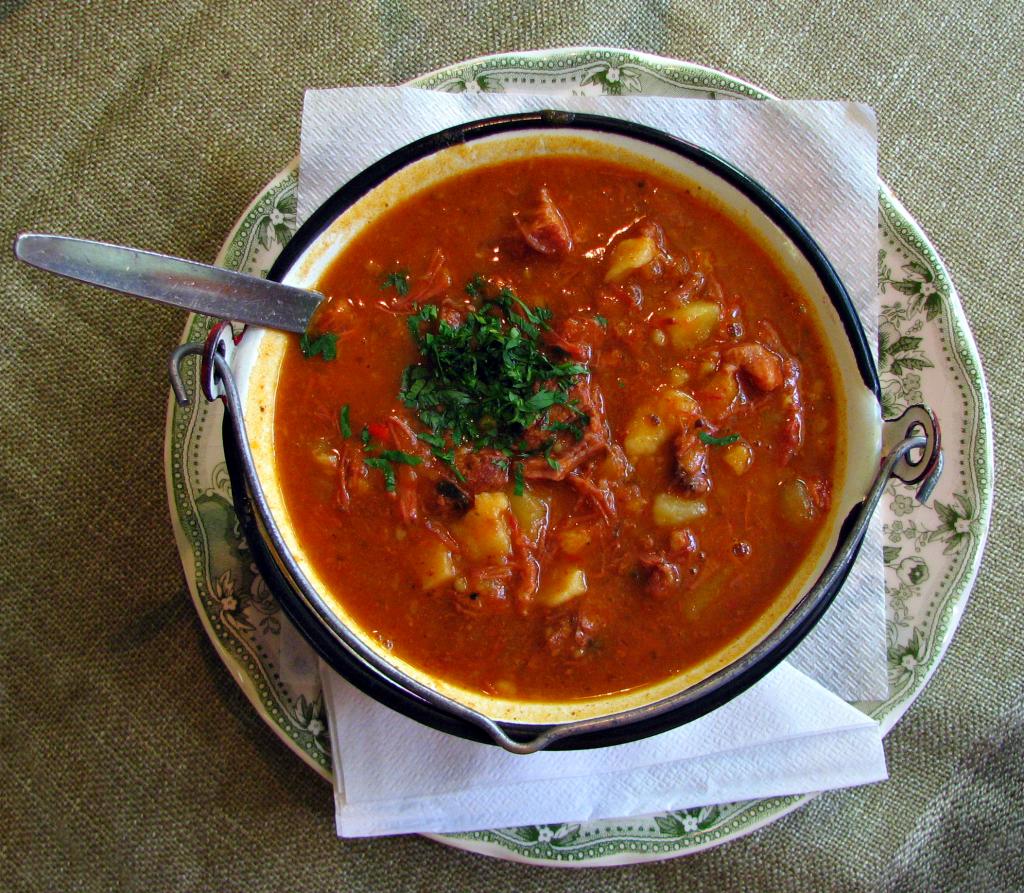 Originating from medieval Hungary, goulash (gulyás) is a soup containing meat (usually beef and/or lamb), vegetables (celery, carrots, potatoes), and Hungary's favorite seasoning, paprika. I know what you're thinking. Why would I go all the way to Salzburg (six hours away by train) to eat a Hungarian soup? Well, because the Austrians have their own take on gulyás, and I may just like it better. It's more of a stew than a soup, making it more filling and satisfying. And caraway seeds are added, which actually completely change the flavor. I can't explain how, but they do. There is one Hungarian variant, Székely gulyás, that is similar to the goulash I ate in Salzburg, but it lacked the caraway seeds and was served with bread, instead of with semmelknödel (dumplings).
Originating from medieval Hungary, goulash (gulyás) is a soup containing meat (usually beef and/or lamb), vegetables (celery, carrots, potatoes), and Hungary's favorite seasoning, paprika. I know what you're thinking. Why would I go all the way to Salzburg (six hours away by train) to eat a Hungarian soup? Well, because the Austrians have their own take on gulyás, and I may just like it better. It's more of a stew than a soup, making it more filling and satisfying. And caraway seeds are added, which actually completely change the flavor. I can't explain how, but they do. There is one Hungarian variant, Székely gulyás, that is similar to the goulash I ate in Salzburg, but it lacked the caraway seeds and was served with bread, instead of with semmelknödel (dumplings).
Tafelspitz
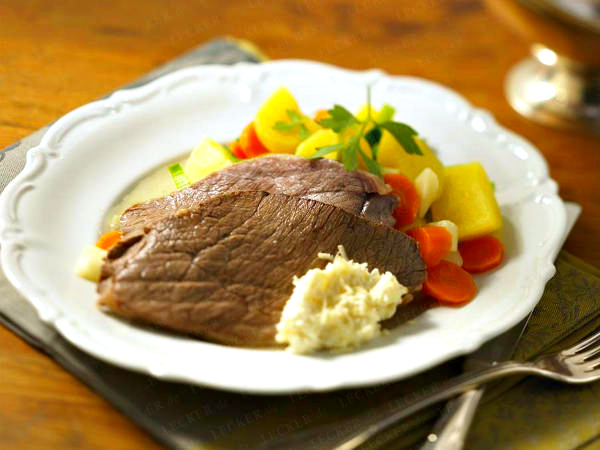 At first glance, you might think that this boiled beef dish seems basic and possibly not very appetizing. But you would be wrong. Because the meat (a rump or round roast cut) is simmered with root vegetables, it's actually quite moist and flavorful. Accompanying it is horseradish--the real, potent kind, made from shredded horseradish and vinegar--, roasted or boiled potatoes, and boiled root vegetables. Hungarians have something similar (or at least my family does), so this was really like a taste of home for me.
At first glance, you might think that this boiled beef dish seems basic and possibly not very appetizing. But you would be wrong. Because the meat (a rump or round roast cut) is simmered with root vegetables, it's actually quite moist and flavorful. Accompanying it is horseradish--the real, potent kind, made from shredded horseradish and vinegar--, roasted or boiled potatoes, and boiled root vegetables. Hungarians have something similar (or at least my family does), so this was really like a taste of home for me.
Incidentally, tafelspitz is considered one of Austria's national foods and was a favorite of Emperor Franz Josef I.
Wiener Schnitzel
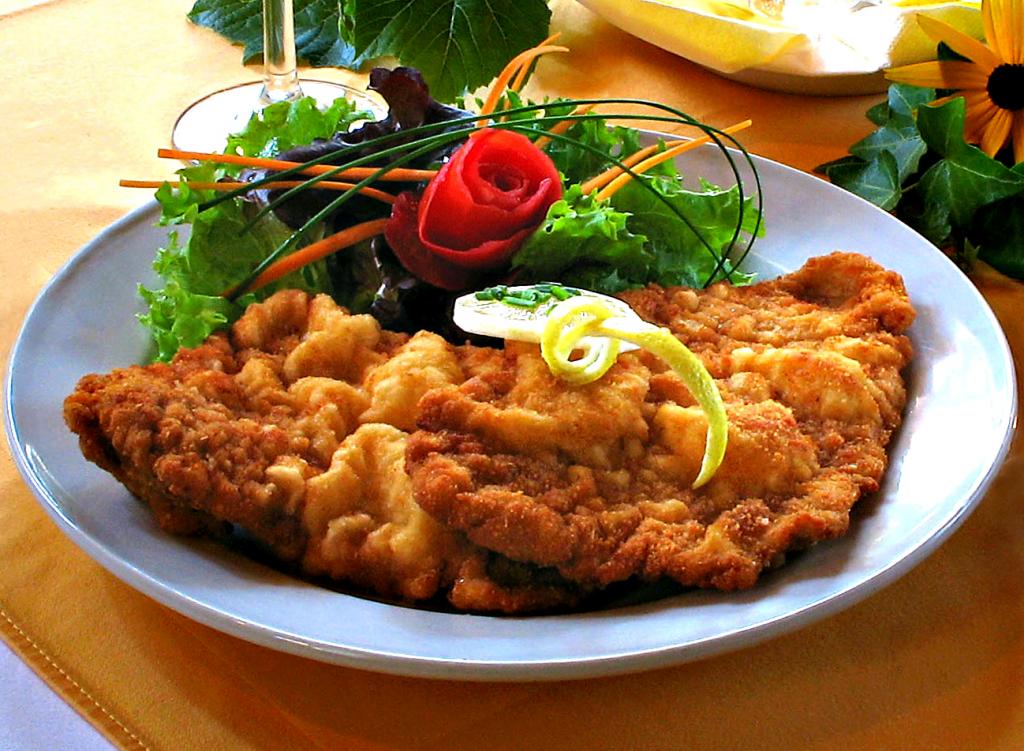 Arguably one of Austria's most famous imports, this breaded and fried meat cutlet is traditionally made from veal, but most restaurants make it from pork, as well. Broken down, the name means "Viennese cutlet," which is a bit of a misnomer, really, since the idea actually originated in Milan, with the piccata milanese. This is another dish that you will find all over Central Europe, but again, each country will put its own spin on it. For example, when I ate Wiener schnitzel in Salzburg, it came with parsley potatoes and kopfsalat (a salad containing lettuce, chopped chives and onions, and a slightly sweet vinaigrette).
Arguably one of Austria's most famous imports, this breaded and fried meat cutlet is traditionally made from veal, but most restaurants make it from pork, as well. Broken down, the name means "Viennese cutlet," which is a bit of a misnomer, really, since the idea actually originated in Milan, with the piccata milanese. This is another dish that you will find all over Central Europe, but again, each country will put its own spin on it. For example, when I ate Wiener schnitzel in Salzburg, it came with parsley potatoes and kopfsalat (a salad containing lettuce, chopped chives and onions, and a slightly sweet vinaigrette).
Würstl
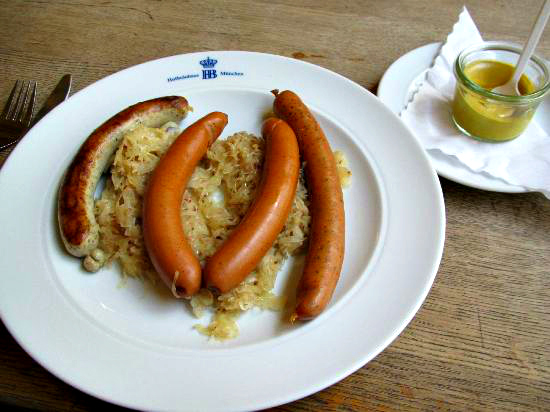 Simply put, this is Vienna sausage, but the original bears no resemblance to the canned version sold in America. Made from pork--blessedly not from the dubious bits--, würstl is very similar to the German frankfurter. I ate a lot of this stuff in Salzburg, where they served it with sauerkraut, grainy mustard, and brown bread.
Simply put, this is Vienna sausage, but the original bears no resemblance to the canned version sold in America. Made from pork--blessedly not from the dubious bits--, würstl is very similar to the German frankfurter. I ate a lot of this stuff in Salzburg, where they served it with sauerkraut, grainy mustard, and brown bread.
Apfelstrudel and Salzburger Nockerl
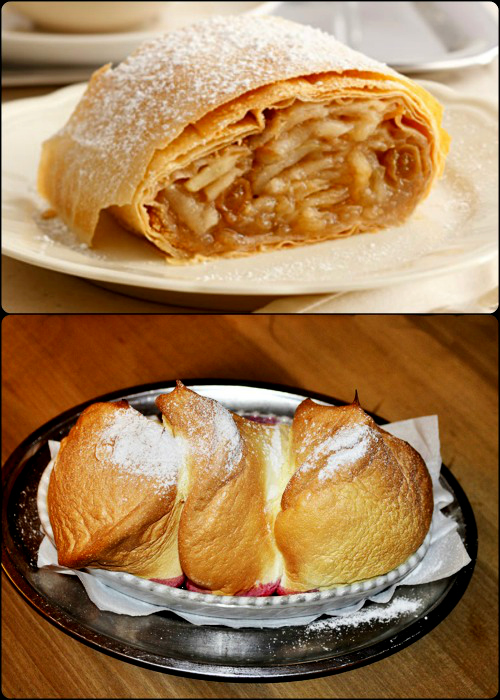 Everyone knows apple strudel. Invented in Vienna, this pastry features a thin, somewhat flaky dough filled with tart apples, sugar, cinnamon, and raisins. Some places, particularly in America, vanilla ice cream is served alongside it, but in Salzburg, I had mine with vanilla sauce and whipped cream.
Everyone knows apple strudel. Invented in Vienna, this pastry features a thin, somewhat flaky dough filled with tart apples, sugar, cinnamon, and raisins. Some places, particularly in America, vanilla ice cream is served alongside it, but in Salzburg, I had mine with vanilla sauce and whipped cream.
Salzburger nockerl, however, is less well-known, though I prefer it to apfelstrudel. A soufflé-like dessert, it consists of a thin dough (egg yolk, sugar, flour, and vanilla extract) mixed with egg whites (whisked until they are "stiff peaks"), from which dumplings are formed and baked on low heat. It is served golden and warm, either with powdered sugar or a raspberry purée.






